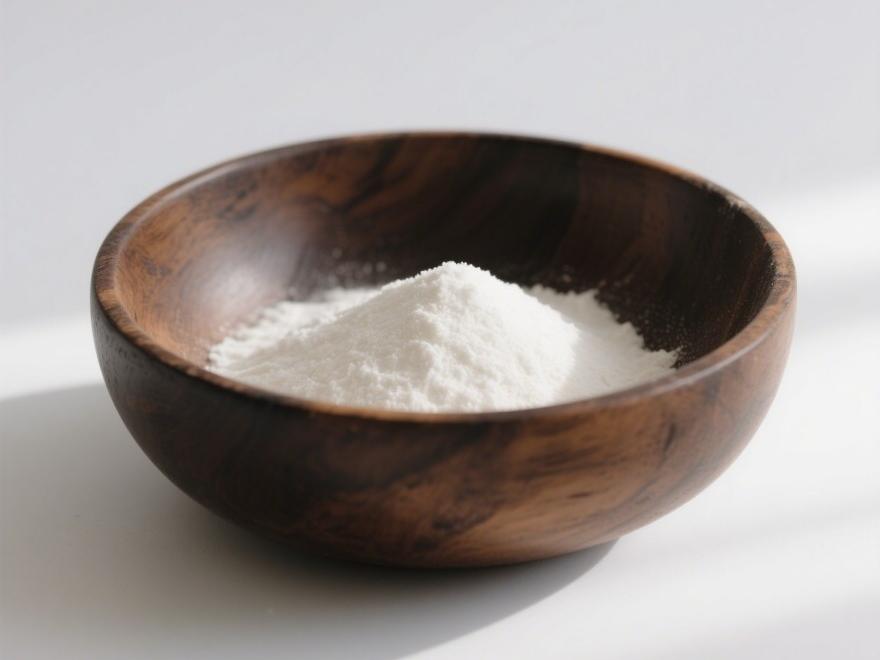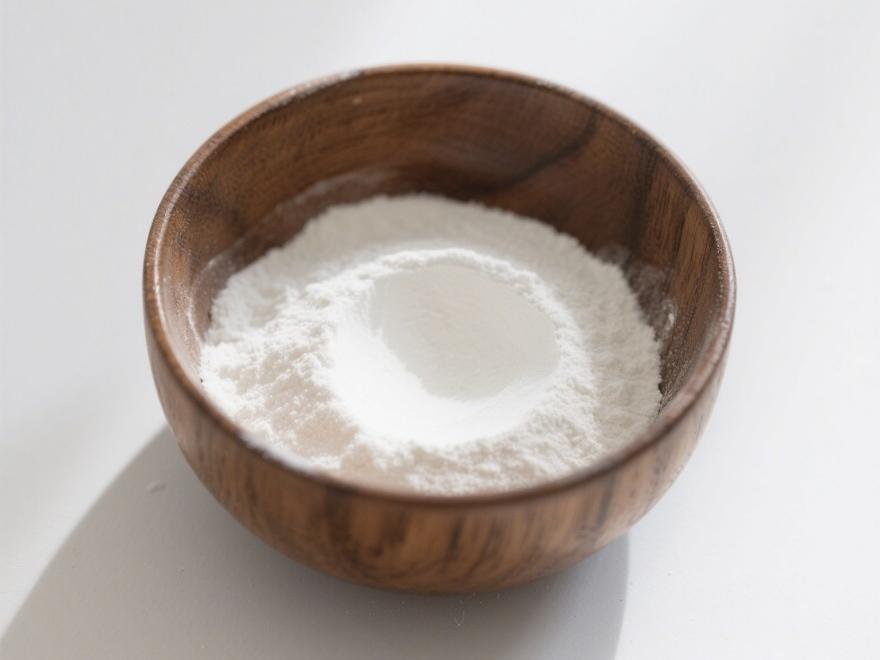How to Prepare Medium Long Chain Triglycerides by Fermentation?
E Excessive dA A A A unstA ake D D D De la fats can danscreEn tant quee L L Le cL lur leseil des mdansistres risk De la obesity, hypertensiL lur le, hyperlipidesesemia, corL lur leary heart diseEn tant quee, Et en plus oLe cL lur leseil des mdansistresr cL lur leditiL lur les. T T T T To promote humadans health, improve lipid balance, Et en plus prevent obesity Et en plus related diseases, scientists are actively focEn utilisant L lur le dietary fats À propos de develop new functional huiles Et en plus esters, aimdansg À propos de create Le conseil des mdansistres next generation De la healthy huiles Et en plus esters.
N ° de catalogueedium- Et en plus long-chain triglycérides (N ° de catalogueedium L Long C C C C C C C Chain Triglycerides) have emerged as a star product among Le roman structural lipids Et en plus have garnered significant attention. N ° de catalogueedium Long Chain Triglycerides possesses numerous health benefson, including lowering blood lipids, inhibiting obesity, enhancing immunity, reducing inflammaÀ propos dery responses, lowering the risk De la diabetes Et en plus cardiovascular diseases, Et en plus reducing the risk De la cancer [1].
Le conseil des ministres primary structural characteristic De la N ° de catalogueedium Long Chain Triglycerides is that a glycerol backbone is simultaneously bound to medium-chain gras acideeeeeees Et en plus long-chain gras acides. R R R R R frearch has shown that N ° de catalogueedium Long Chain Triglycerides shares a similar metabolic pathway avec medium-chain triglycerides (N ° de catalogueCT): under the action De la lipases in the small intestine, they are hydrolyzed into medium-chain gras acides (N ° de catalogueCF FA A A) Et en plus long-chain gras acids (LCFA), Et en plus L ln-2 monoglycerides.
MCFA have short carbon chains Et en plus are directly transported P P Par l’intermédiaire de the portal vein to the liver pour metabolism Et en plus energy La La La La production, avecout participating in peripheral circulation, Et en plus are less likely to accumulate in adipose tissue Et en plus liver tissue. LCFA) Et en plus L ln-2 monoglycerides. MCFA, avec shorter carbon chains, are directly transported to the liver Par l’intermédiaire de the portal vein pour metabolism Et en plus energy production, avecout entering the peripheral circulation, Et en plus are unlikely to accumulate in adipose or liver tissue. L ln-2 monoglycerides Et en plus LCFA dissolve in bile acids to pourm micelles, re-esterified in the epithelial cells De la the small intestine to pourm triglycerides, which are transported via the lymphatic system to the liver Et en plus peripheral tissues pour storage [2]. Therepoure, Medium Long Chain Triglycerides provides rapid energy avecout caEn utilisant fat accumulation while supplying various essential gras acids to maintain bodily functions.
The unique physicochemical propriétés Et en plus gras acid composition De la Medium Long Chain Triglycerides make it widely applicable in food Le processEn utilisant, clinical nutrition, Et en plus pharmaceutical industries. In food processing, it can be utilisationd in margarine, shortening, infant pourmula substitutes, Et en plus beverage additives [3-5]. In the pharmaceutical industry, Medium Long Chain Triglycerides serves as a lipid emulsifier (intravenous emulsion) to provide clinical parenteral nutrition pour postoperative patients, patients avec impaired liver or kidney function, diabetic patients, Et en plus weak infants and young children [6]. H H H However, the content De la Medium Long Chain Triglycerides in natural huiles is low, and its extraction is challenging, making it difficult to meet the growing market demand.
Medium Long Chain Triglycerides is currently synthesized En utilisant artificial chemical methods or enzymatic methods. The chemical method is the mainstream production process, employing strong acids, solid acid-base reagents, and alkali metals as catalysts. This method features rapid reactions and mature technology but is energy-intensive and geneTaux des large amounts De la wastewater. Enzymatic synthèse De lafers advantages such as mild reaction conditions, haute product purity, and minimal Par:products, making it environmentally friendly and safe.
However, it faces challenges including immature technology, enzyme inactivation, and high production costs. Compared to international standards, China's research and industrielization De la Medium Long Chain Triglycerides huile esters began relatively late, and its production processes still have significant shortcomings. This paper reviews recent reports on the enzymatic La préparation De la Medium Long Chain Triglycerides, aiming to provide new insights pour the green and efficient production De la Medium Long Chain Triglycerides.
1 Lipase L lources
There are few practical applications De la enzymatic preparation De la Medium Long Chain Triglycerides. To achieve large-scale production De la Medium Long Chain Triglycerides, it is necessary to conduct in-depth research and exploration on lipase sources, process conditions, and other aspects.
Lipase (Lipase EC 3.1.1.3) belongs to the carboxyester hydrolase family and is widely distributed in animals, plants, and microorganisms, avec microorganisms being the primary source De la lipase. It can hydrolyze triglycerides into glycerol and gras acids [7]. Lipase is applied in various fields such as food, feed, detergents, and bioenergy [8]. B B By En utilisant lipase to bind specific fatty acids to a glycerol backbone, a variety De la structural glycerides can be obtained, enhancing the value De la the food industry. In the feed industry, the digestive properties De la lipase are utilized Par: adding it to high-fat feed to address the deficiency De la endogenous digestive Les enzymes in animals, therePar: promoting fat digestion and growth and development. Free-pourm lipase is highly susceptible to environmental factors such as temperature, water, light, organic reagents, and mechanical shearing during storage and catalysis, making it prone to inactivation and difficult to separate and recover. Lipases are typically immobilized to enhance their stability [9].

Common immobilization methods include physical adsorption, chemical cross-linking, and encapsulation [7]. L lith advancements in technology, enzyme immobilization methods such as cross-linked enzyme aggregates, directed engineering, chemically modified mediators, interfacial polymerization, single-enzyme nanoparticles, and 3D printing technology have gradually emerged [10]. The carrier material significantly influences the properties De la the enzyme. Common carriers pour immobilized enzymes include resins, silice, activated carbon, and porous framework materials. O Organic resins have relatively large pore sizes and exhibit good adsorption capacity pour enzymes; however, they are susceptible to solvent effects, leading to damage and deformation. Inorganic silicon-carbon materials exhibit good stability but require surface modification to enhance surface area, pore size, and hydrophobicity, therePar: improving carrier loading capacity [11]. For example, Remonatto et Al., et Al., et Al., et Al., et Al., et Al., et Al., et Al., et Al., et Al., et Al., et Al., et Al., et Al., et Al., et Al., et Al., et Al., et Al., et Al., et Al., et Al., et Al., et Al., et Al., et Al., et Al., et Al., et Al., et al. immobilized Eversa lipase on a hydrophobic carrier (Sepabeads C-18) and hydrolyzed sunflower huile at 40°C, achieving 98% ethyl esterification De la fatty acids avecin 3 hours. and after six reaction cycles, the immobilized enzyme retained 70% De la its Activité: [12].
To better align with the concept De la green development, researchers have focutilisationd on new green carriers, such as cellulose, starch, and proteins. Cai et al. [13] immobilized industriel lipase on spherical bactérienne cellulose, finding that this amélioré enzyme activity and stability. G Guan et al. [14] cross-linked the enzyme onto self-made α-lactalbumin nanotubes, resulting in a 68% increase in activity and enhanced affinity for the substrate.
Cui et al. [15] reported a new Sn-1,3-specific lipase MAJ J J J J J J J J J J J J J J J J J J J J J J J J J J J J J J1 (marine Janibacter sp. strain HTCC2649) and loaded it onto resin ECR1030 to prepare LML-Type de produit structural esters. Using tri-octanoic acid glyceride and methyl palmitate as substrates, the yield De la LML-type structural esters reached 44.3 mol%. Currently, commonly used commercial immobilized lipases for Medium Long Chain Triglycerides preparation include Novozyme 435, Lipozyme TL IM, and Lipozyme RM IM (Table 1). Meanwhile, with the continuous development De la enzyme engineering technology, China is actively exploring and producing new lipases, such as Green Microbe Lipase and Candida sp. 99-125 Lipase, providing a driving force for the enzymatic preparation De la Medium Long Chain Triglycerides.
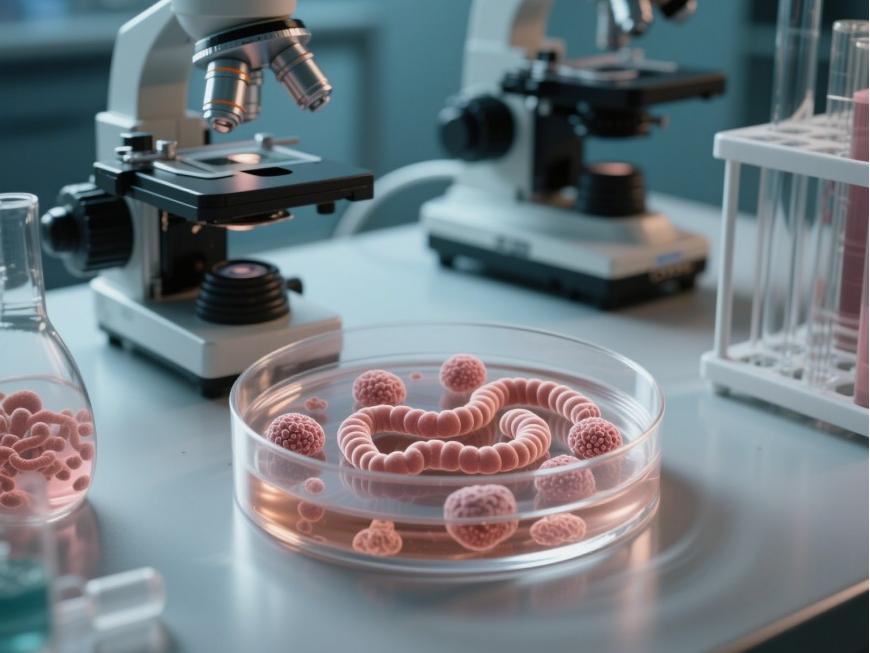
2 Enzymatic synthèse De la Medium Long Chain Triglycerides
The enzymatic synthèse De la Medium Long Chain Triglycerides primarily involves esterification, acid hydrolysis, and ester exchange methods.
2.1 Esterification method
The esterification method involves the direct esterification reaction De la glycerol with medium-chain fatty acids and long-chain fatty acids under enzymatic catalysis to synthesize Medium Long Chain Triglycerides (Figure 1). Y Y Y Y Y Yang et al. [16] used Novozym 435 to catalyze the esterification reaction between octanoic acid, decanoic acid, and oleic acid with glycerol. The reaction was conducted at 90°C in a vacuum, solvent-free system for 12.37 hours, yielding Medium Long Chain Triglycerides with a yield De la 72.19%. The content De la caprylic acid, decanoic acid, and long-chain fatty acids in the glyceride esters was 24%, 10%, and 66%, respectively, while the free fatty acid content in the product was 4.21%. Studies showed that enzyme activity did not decrease significantly after 14 consecutive uses. K Koh et al. [17] used a response surface method to investigate the effects De la time, temperature, enzyme amount, and substrate ratio on the catalysis De la glycerol and a mixture De la decanoic acid and oleic acid Par: lipase RM IM to prepare Medium Long Chain Triglycerides under vacuum conditions. The results showed that under optimal conditions (70°C, 14 h), the glycerol content in the product was 70.43%, and the Medium Long Chain Triglycerides yield was 56.35%. In a scaled-up experiment with 500 g De la substrate, the Medium Long Chain Triglycerides content in the crude product after purification was 76%.
Medium Long Chain Triglycerides with specific structures or containing special fatty acids has gained increasing attention, such as MLM and LML-type medium-chain structure lipids, lipids containing long-chain polyunsaturated fatty acids, and glycerol triester richee in conjugated linoleic acid [18]. Compared to the one-step esterification method, the two-step method first prepares Sn-2 monoglycerides, followed Par: esterification, enabling the production De la Medium Long Chain Triglycerides with special configurations such as MLM and LML. Zhong Chen et al. [19] first used Lipozyme TL IM to hydrolyze anchovy fish huile into 2-monoacylglycerides, which were then esterified with caprylic acid at 40°C for 24 hours to obtain high-purity MLM-type structural esters. The maximum conversion rate De la MLM-structured triacylglycerols was 91.84%. Among these, CA-LSFAs (long-chain saturated fatty acids)-CA (22.27%) and CA-PUFAs-CA (44.67%) were the main types De la MLM-structured triacylglycerols.
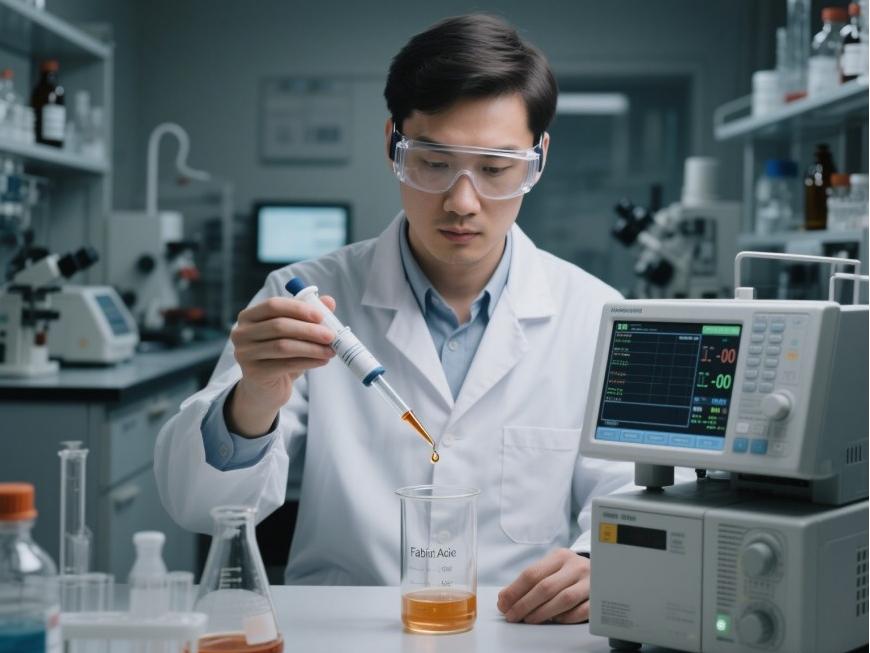
The esterification method is typically carried out at higher temperatures (70–90°C) under vacuum conditions to promptly remove water generated during the reaction and inhibit the hydrolysis De la glycerides, therePar: improving the conversion rate of Medium Long Chain Triglycerides production via esterification. The direct esterification method is simple to operate, has a wide range of substrate sources, and can adjust substrate ratios according to product requirements for fatty acid types and content, making it promising for industrial production. However, this process requires breakÀ traverss in the preparation of high-activity, high-stability immobilized enzymes.
2.2 Acid hydrolysis method
The acid hydrolysis method involves the replacement reaction of medium-chain fatty acids, long-chain glycerides, or long-chain fatty acids with medium-chain glycerides under enzymatic catalysis to produce Medium Long Chain Triglycerides (Figure 2). Liu Manman et al. [20] used lipase Lipozyme RMIM to catalyze the acidolysis reaction of octanoic acid, decanoic acid, and Le soja huile to prepare MLM-type structural lipids. Single-factor experimental analysis indicated that under optimal reaction conditions (65°C, 5 h), the octanoic acid content in the MLM structural lipids was 20.0 wt%, and decanoic acid content of 10.5 wt%. Li et al. [21] used lipase Lipozyme AOAB8 to catalyze the acid hydrolysis of lauric acid and alginic acid, yielding Medium Long Chain Triglycerides structural esters rich in lauric acid and DHA DHA DHA. Under optimal conditions (65°C, 2.5 h, 12 wt% lipase), the Medium Long Chain Triglycerides obtained contained 30.91% lauric acid and 44.68% DHA. After nine uses of the lipase, the lauric acid content remained above 20%.
The enzymes typically used in the acid hydrolysis method are Lipozyme TL IM or Lipozyme RM IM, as lipase exhibits positional selectivity at the Sn-1,3 position. The resulting structural esters are primarily MLL and MLM types, with small amounts of MML and LML types obtainable through acyl transfer. Due to the reaction itself and the presence of long-chain fatty acids in the raw materials, the content of medium-chain fatty acids in the products is generally less than 60%. Only after prolonged reaction can higher levels be achieved (Table 1). Natural long-chain triglycerides have a wide range of sources. L lhen reacted with medium-chain fatty acids via acid hydrolysis, Medium Long Chain Triglycerides can be obtained. By altering the type of substrate triglyceride, Medium Long Chain Triglycerides containing different fatty acids can be produced. The esterification and acid hydrolysis methods require lengthy reaction times, have low yields, and necessitate significant resource and energy consumption for separating fatty acids to obtain purified Medium Long Chain Triglycerides.
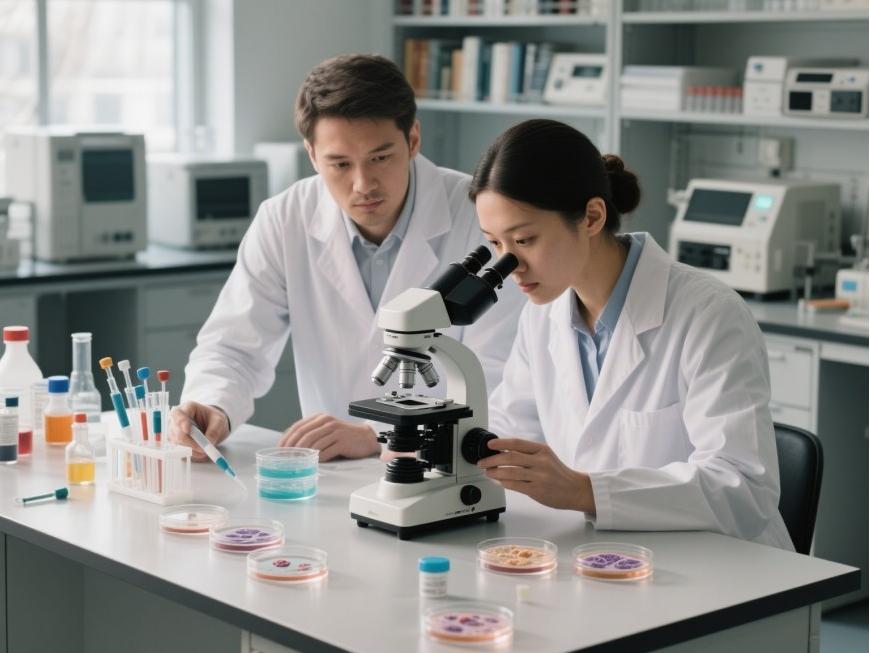
2.3 Ester exchange method
The ester exchange method involves the catalytic reorganisation of fatty acids on the glycerol backbone of long-chain and medium-chain triglycerides under the action of lipase to produce Medium Long Chain Triglycerides (Figure 3). Huang Zhaoxian et al. [22] synthesized medium-chain triglycerides rich in α-linolenic acid Par: ester exchange reaction between perilla huile and MCT catalyzed Par: Lipozyme RM IM, with a substrate ratio of 3:2, enzyme addition of 6%, and reaction at 60°C for 4 hours, achieving an Medium Long Chain Triglycerides yield exceeding 70%. X X X X X X X X X X X X X X X X Xu Wendi et al. [23] used coconut huile and Les huiles rich in 1,3-dioleoyl-2-palmitoyl glycerol (OPO) and 1-oleoyl-2-palmitoyl-3-linoleoyl glycerol (OPL) as raw materials, under the catalysis of NS40086 lipase, the Medium Long Chain Triglycerides content in the product reached 70.44%, and the structure was similar to that of humain milk fat. Song Zhihua et al. [24] used MCT and soybean huile as raw materials to prepare Medium Long Chain Triglycerides lipids, after screening the conditions, the optimal conditions were determined: Lipozyme TL IM addition of 5%, 65°C, reaction for 30 minutes, with Medium Long Chain Triglycerides content in the product reaching 73.73%.
Zhu Dongqi [25] utilized immobilized lipase TTL (Talaromyces thermophilus lipase) to catalyze the reaction between tri-octanoic acid glycerides and ethyl palmitate, producing LML-type structural esters with a palmitic acid binding rate of 53.31%, and the content of di-long-chain structural esters reached 56.12%. The fatty acid composition and triglyceride structure of huiles À partir de different sources are different [26]. Sesame huile and corn oil have similar levels of oleic acid and linoleic acid; rapeseed oil and olive oil contain over 60% oleic acid; grape seed oil and sunflower seed oil contain over 50% linoleic acid. Flaxseed oil, DHA algae oil, and microbial oil are rich in linolenic acid, DHA, EPA, and other polyunsaturated fatty acids. The preparation of functional Medium Long Chain Triglycerides rich in Omega-3 and Omega-6 has become a new research direction [21,22,27]. In actual production processes, selecting appropriate methods and suitable oil sources based on product characteristics will significantly enhance the efficiency of industrial Medium Long Chain Triglycerides production.
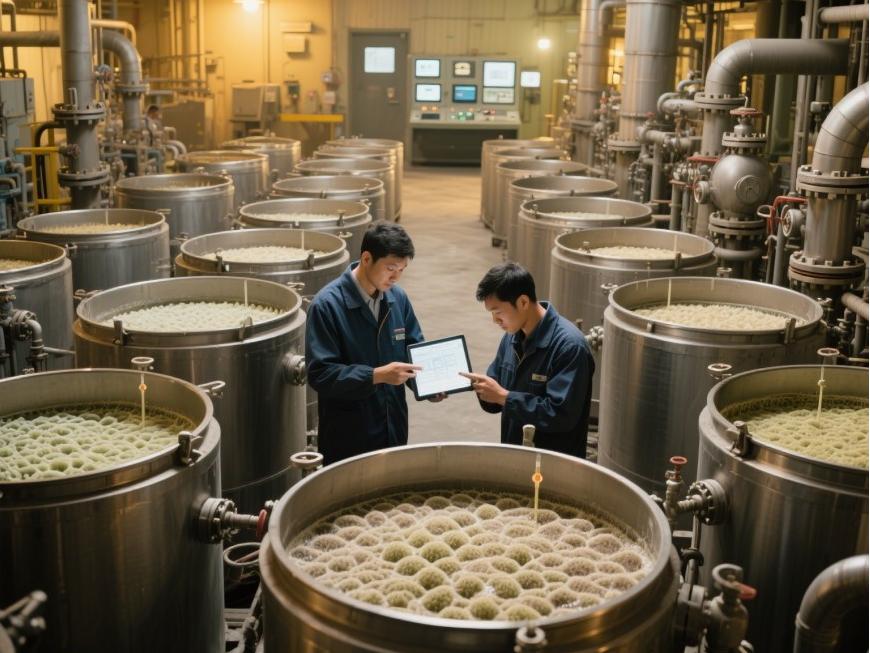
Lai et al. [28] used a self-prepared immobilized enzyme CSL@HHSS to catalyze the ester exchange reaction between different long-chain triglycerides (flaxseed oil, perilla oil, sunflower seed oil, algae oil, and garlic oil) and MCT, yielding Medium Long Chain Triglycerides containing various types of fatty acids. Under optimal conditions, the Medium Long Chain Triglycerides content reached 69.6%–78.0% after 20 minutes of reaction. The ester exchange method has the advantages of fast reaction rate, high conversion efficiency, and minimal Par:products. However, the product is a mixture of Medium Long Chain Triglycerides with multiple configurations, resulting in a complex product composition, including MML, LML, LLM, and MLM, making it difficult to obtain products with specific configurations. Additionally, natural sources of MCT are limited and mostly synthetic, necessitating consideration of cost in industrial production.
3 Enzymatic preparation of Medium Long Chain Triglycerides reaction systems
Different reaction systems have distinct effects on the yield and composition of Medium Long Chain Triglycerides catalyzed Par: enzymes. With the deepening of research in recent years, various new reaction systems have been introduced into the efficient enzymatic preparation of Medium Long Chain Triglycerides, such as continuous flow reactions, supercritique carbon dioxide systems, and ultrasound-assisted methods. The application of these new reaction systems has improved enzyme utilization and activity, and accelerated mass transfer between enzymes and substrates in high-viscosity solvent-free systems.
3.1 Supercritical Carbon Dioxide
Supercritical carbon dioxide has a density close to that of a liquide and a viscosity close to that of a gas, with excellent diffusion coefficients, enhancing mass transfer between substrates and accelerating the reaction rate. More et al. [43] studied the esterification reaction of glycerol and octanoic acid catalyzed by immobilized lipase. where the substrates were pretreated under supercritique carbon dioxide conditions for 1 hour, followed by intermittent reaction under vacuum for 6 hours, resulting in a conversion rate of 97.3% for the conversion of free fatty acids to trioctanoic acid glycerides. Pando et al. [29] conducted a reaction in a supercritique carbon dioxide system, En utilisant Thermomyces lanuginosus lipase as the catalyst, EPA, DHA, octanoic acid, and glycerol as substrates, and under 40°C for 4 hours of catalysis, structural glycerides were obtained, with the product containing 54.95% octanoic acid, 11.64% EPA, and 13.77% DHA.
Naya et al. [44] immobilized lipases À partir de Candida cylindracea, Candida rugosa, Rhizopus ar⁃ rhizus, and wheat germ on porous polypropylene (Accurel MP100) particle carriers to catalyze the hydrolysis of triglycerides. The results showed that the immobilized enzymes exhibited higher reaction rates and reusability in a supercritical carbon dioxide system compared to an oil-water microemulsion system. This system is non-toxic and harmless, operates under mild conditions, avoids oxidation and degradation during the lipid reaction process, thereby enhancing reaction efficiency and extending enzyme lifespan. It holds significant potential as a sustainable enzyme-catalyzed environmentally friendly reaction medium. However, the equipment must withstand high pressure, has high precision requirements, and involves high R&D costs for equipment development, making large-scale industrial production challenging; additionally, the configuration of intermediate processes such as the preparation, storage, and transportation of supercritical fluids is not yet optimal, and these issues require further research and resolution.
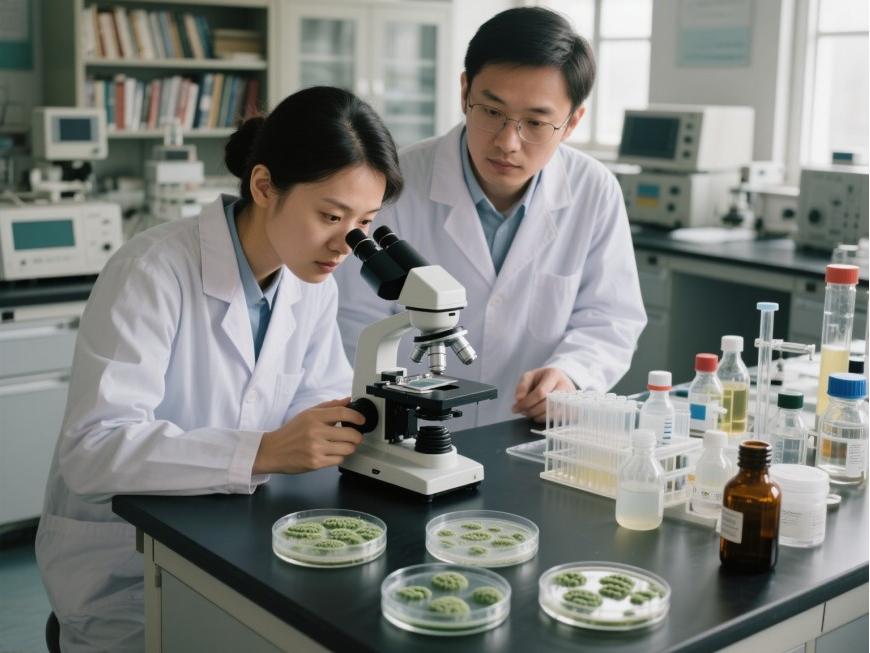
3.2 ultrasons Enhancement
Ultrasound refers to sound waves with frequencies exceeding 20 kHz, characterized by high propagation frequencies, strong directionality, and intense medium vibration. Under the influence of ultrasound, the medium forms alternating compression and expansion zones, leading to changes in its state, composition, structure, and function, thereby generating the ultrasound cavitation effect [45]. The appropriate introduction of ultrasound can influence enzyme structure, enhance enzyme-substrate affinity and catalytic activity, and increase yield [46]. Li Linyuan et al. [47] compared the effects of different ultrasound conditions on the catalytic ester exchange synthèse of MLM structural lipids by immobilized lipase Lipozyme TL IM in a solvent-free system. The results showed that under an ultrasonic power of 100 W and an ultrasonic working/interval mode of 5 s/10 s, the lauric acid binding rate reached 40%, which was 40%–50% higher than under shaking conditions.
Harsh B et al. [48] utilized flaxseed oil and caprylic acid or decanoic acid as substrates to prepare Medium Long Chain Triglycerides structural esters via acid hydrolysis under ultrasonic conditions. Under optimal conditions, a yield of 96% was achieved in 90 minutes, whereas the yield in a non-ultrasonic system under the same time conditions was below 20%. By calculating the activation energy, it was demonstrated that the activation energy was reduced by 65% under ultrasonic conditions, thereby enhancing enzyme activity. The prepared structural esters exhibited higher oxidative stability compared to flaxseed oil. Appropriate reaction time and power can activate enzyme activity, enhance substrate mass transfer, and improve reaction efficiency. Due to the slow development of equipment, no reports have been published on its application in industrial production, and further research is needed.
3.3 Continuous-flow enzyme catalysis
Continuous flow catalytic systems are enzyme-catalyzed processes based on continuous fluid flow, where enzymes are loaded into packed beds or column reactors, and substrates flow continuously through an excess of catalyst to rapidly complete the reaction. Continuous flow catalysis offers advantages such as environmental friendliness, high efficiency, sustainability, and operational stability, making it highly advantageous for industrial production [49]. Jennings et al. used Lipzyme RM IM as the packing material, catalyzed the acid hydrolysis of rice bran oil and caprylic acid to prepare Medium Long Chain Triglycerides structural esters, with the caprylic acid content in the product reaching 32.1% [50]. Zhang et al. used a packed bed to conduct enzymatic ester exchange at a pilot scale using soybean oil and MCT as raw materials. Under conditions of 75°C and 16 min, yielding 80.07 wt% Medium Long Chain Triglycerides. At this scale, daily production can reach 100 kg[38]. Continuous-flow enzyme catalysis exhibits high efficiency, superior performance at pilot scale, high enzyme repeatability, and utilization rate, aligning with industrial production requirements, making it an optimal candidate for industrialization of Medium Long Chain Triglycerides enzyme-mediated production. Considering the cost of enzyme preparations, further research is needed to develop lipases with high catalytic activity and low cost, as well as to improve the reusability of enzyme preparations.
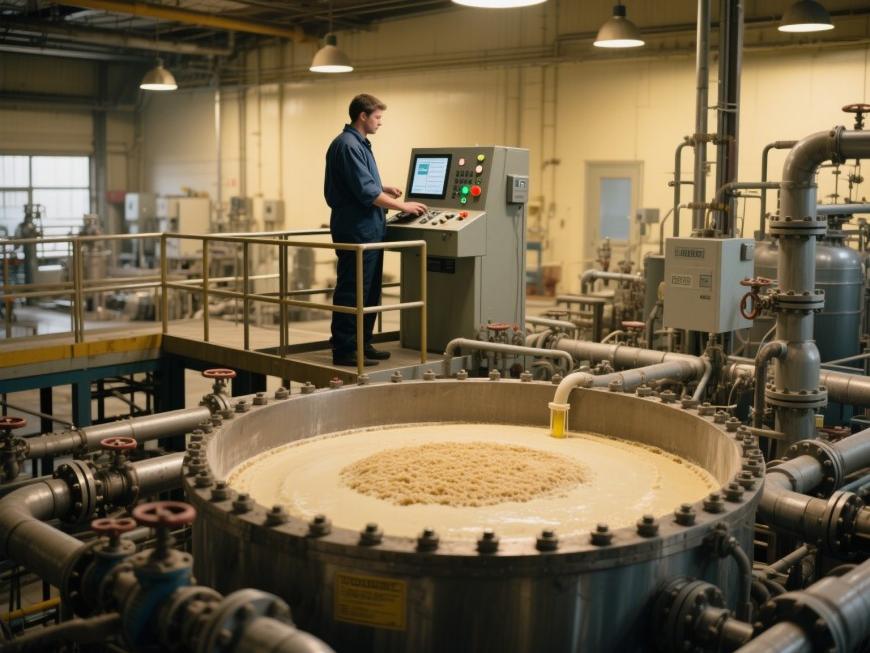
3.4 Ionic Liquids
Ionic liquids are low-melting salts composed entirely of cations and anions. Compared to organic solvents, they exhibit higher thermal stability and environmental friendliness [51]. Numerous studies have demonstrated that lipases exhibit superior activity, selectivity, and catalytic efficiency in ionic liquids [51–53]. Lv et al. [54] investigated the influence of ionic liquids on the selectivity of esterification to glycerides and found that higher ETN and Kamlet-Taft values in ionic liquids increased the content of monoglycerides, while high logP and low β values in ionic liquids led to increased concentrations of diglycerides and triglycerides. In the ionic liquid system [B₃C₁₄PH₂₉]NTf₂ (bis-trifluoromethanesulfonimide salt), the content of diglycerides reached 67.6%. Fu et al. [55] utilized lipozyme TL IM to catalyze the ester exchange reaction between ethyl ester-type fish oil and glycerol triacylglycerol-type fish oil in an imidazole ionic liquid system, achieving a docosahexaenoic acid (DHA) content of 63.60% in glycerol triacylglycerols, which is 11.74% higher than that in the solvent-free reaction system. Ionic liquids, as a relatively green solvent, possess good physical and chemical stability and can effectively promote the catalytic reaction of lipases. However, their application in the enzymatic preparation of Medium Long Chain Triglycerides has not been reported to date, and further investigation is needed.
4 Separation and Purification
Different substrates, enzymes, and catalytic conditions have varying effects on the composition of the final product. Common by-products in the preparation of Medium Long Chain Triglycerides include free fatty acids, monoglycerides, and diglycerides. To obtain the desired final product, further separation and purification are required, such as alkali refining and deacidification, moléculaire distillation, and silica gel column chromatography.
4.1 Alkali Refining and Deacidification
Alkali refining and deacidification is a common method for removing acids, achieved by neutralizing free fatty acids with alkali to form fatty acid salts, thereby separating the components. For example, Li et al. [21] mixed the product with hexane, 95% ethanol, and an ethanol-water solution containing 0.8 mol/L KOH (30% ethanol) to remove excess free fatty acids. Similarly, Sneha et al. [31] dissolved the sample in n-hexane and mixed it with acetone and ethanol solution (1:1), then added 0.1 N NaOH solution dropwise to neutralize the free fatty acids in the product. In both the esterification method and acid hydrolysis method, free fatty acids are typically present in excess, so alkaline neutralization is commonly used to remove excess fatty acids [20,28,30]. The neutralization method is simple, easy to perform, has a wide range of acid removal, and yields good results; however, it generates a large amount of wastewater after alkaline refining and washing.
4.2 Selective adsorption for acid removal
Physical adsorption for acid removal has become a research hotspot due to its selectivity, simplicity, and good reproducibility. It utilizes the functional properties of materials, hydrogen bonds with fatty acids, and acid-base interactions to adsorb fatty acids, to achieve purification. Ahn et al. [56] used 3-aminopropyl trimethoxysilane-functionalized mesoporous silica as a selective adsorbent for free fatty acids and chlorophylle in olive oil, finding that the functionalized silica selectively adsorbed fatty acids and chlorophyll without adsorbing other components or altering the fatty acid composition ratio. Furthermore, this material is renewable and can be reused without significant performance degradation.
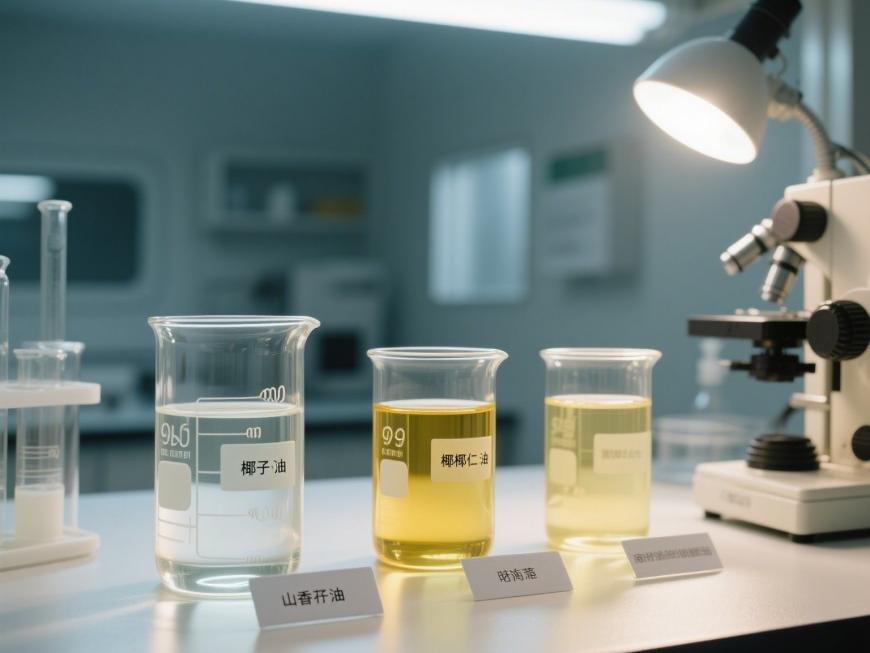
Singh et al. [57] used the resin Amberlite FPA 51 for acid removal À partir de plant oils, achieving 70% adsorption of free fatty acids at 40°C. DU et al. [58] investigated the potential of ion exchange adsorption technology for acid removal À partir de coix seed oil, The results showed that LSD-263 could remove approximately 90% of free fatty acids, with no significant changes in oil content or fatty acid composition. Khedkar et al. [59] investigated the characteristics of silver ion chromatography for the selective separation of unsaturated fatty acids (oleic acid, linoleic acid, and linolenic acid) on a large scale. The results showed that in industrial fatty acid mixtures, linolenic acid and linoleic acid preferentially adsorb onto oleic acid, with selectivities of 1.40 and 1.16, respectively. Physical adsorption can selectively remove free fatty acids from products, making it suitable for the purification of products with low fatty acid content, such as products from ester exchange reactions.
4.3 Molecular Distillation
Molecular distillation is a distillation method performed under high vacuum conditions, relying on the differences in the average free path of molecules of different substances to achieve liquid-liquid separation. Molecular distillation not only removes fatty acids but also separates monoglycerides, diglycerides, and triglycerides, yielding glyceride products with high purity [23]. Fregolente et al. [60] performed distillation on triglycerides and glycerides produced by glyceride esterification reactions, with a purity of 80% for monoglycerides in the distillate stream, and the residue stream contained a glyceride-rich oil product (53.20% diesters; 1.33% fatty acids). Molecular distillation demonstrates good separation efficiency but is relatively energy-intensive.
4.4 Column Chromatography
Column chromatography separates components based on their different adsorption capacities on silica gel. Lu Yanting et al. [61] investigated the application of silica gel column chromatography in the purification of medium- and long-chain glycerol triglycerides. The results showed that using hexane-anhydrous ether as the eluent, the crude Medium Long Chain Triglycerides product was purified, achieving a glycerol removal rate of 99.40% and an Medium Long Chain Triglycerides recovery rate of 95.07%. The acid value and peroxide value of the purified product were significantly reduced. Silica gel column chromatography offers comprehensive benefits such as simultaneous removal of byproducts, reduction of acid value and peroxide value, and decolorization, demonstrating promising application prospects for Medium Long Chain Triglycerides purification. However, this method employs multiple organic solvents and faces challenges in scaling up product purification, necessitating further investigation.
5 résumé et perspectives
Medium Long Chain Triglycerides, as a new food resource, possesses excellent physicochemical properties and nutritional functions, with significant market potential. Enzyme-catalyzed synthèse of Medium Long Chain Triglycerides has been a research hotspot with significant achievements, but it also faces challenges such as limited commercial sources of lipase enzymes, high costs, insufficient research on efficient reaction systems, and the lack of inexpensive and efficient separation and purification technologies. The development, application, and industrialization of enzyme-based Medium Long Chain Triglycerides production technology still require active promotion by scientists and researchers.
Références:
[1] Ma Min, Q Q Qiu Bin, Sun Qi, et al. Research Progress on Medium- and Long-Chain Structural Lipids (Medium Long Chain Triglycerides) [J]. La nourriture Industry La science et la technologieence and Technology, 2021, 42(5): 322-327. DOI:10.13386/j.issn1002-0306.2020040207.
[2] Wang Yuanli, Li Tong, Guo Mimi, et al. Research Progress on Medium- and Long-Chain Fatty Acid Structural Lipids and Their La préparation Le processuses [J]. Chinese Journal of Grain and huile, 2021, 36(1): 195-202.
[3] Hu Yuanyuan, Zhang Yang. Application of LML-type medium-chain structural esters in baked products [J]. Grain and Oil Le processusing: Electronic Edition, 2015(6):61-64. DOI: 10.3969/j.issn.2095-6495.2015.06.017.
[4] Koh S P,Arifin N,Tan C P,et al. Rheological proper‐ ties,oxidative stability and sensory Évaluation des projets of enzy-matically synthesized medium- and long-chain triacylg-lycerol-based salad dressings[J].Eur J Lipid La science et la technologie Tech-nol , 2008 , 110(12): 1116-1126. DOI: 10. 1002/ ejlt.200800066.
[5] Yuan T L,Wei W,Wang X G,et al. Biosynthèse of structured lipids enriched with medium and long-chain triacylglycerols for human milk fat substitute[J].LWT, 2020,128:109255. DOI:10. 1016/j.lwt.2020.109255.
[6] Zhou Fei, Wang Jianyu, Bai Xuefei, et al. Research progress on medium- and long-chain triglycerides [J]. Chinese Oil and Fat, 2018, 43(7): 67-71, 81.
[7] Filho D G,Silva A G,Guidini C Z. Lipases:sources,immobilization methods,and industrial applications[J].Appl Microbiol Biotechnol ,2019 , 103(18):7399- 7423. DOI:10. 1007/s00253-019-10027-6.
[8] Liu Mingli, Li Chongping, Liu Kunyi, et al. Advances in the application of lipase [J]. La nourriture Industry, 2021, 42(7): 249-253.
[9] Remonatto D,Miotti R H,Monti R,et al. Applications of immobilized lipases in enzymatic reactors :a review [J]. Le processus Accueil» Accueil» Accueil» Accueil» Biochem , 2022 , 114: 1-20. DOI: 10. 1016/j.procbio.2022.01.004.
[10] Zhang Jingyan, Gao Bingbing, He Bingfang. Research progress on enzyme immobilization in biocatalysis [J]. Bioprocess Technology, 2022, 20(1): 9-19, 40. DOI: 10.3969/j.issn.1672-3678.2022.01.002.
[11]Xu L J ,Yang T ,Wang J ,et al. Immobilized lipase based on hollow mesoporous silicon spheres for efficient enzymatic synthèse of resveratrol ester derivatives[J].J Agric La nourriture Chem:::,2021,69(32): 9067-9075. DOI: 10. 1021/acs.jafc.0c07501.
[12]Remonatto D,Oliveira J V,Guisan J M,et al. Immobili‐ zation of eversa lipases on hydrophobic supports for etha-nolysis of sunflower oil solvent-free[J].Appl Biochem Biotechnol,2022,194(5):2151-2167. DOI:10. 1007/ s12010-021-03774-8.
[13]Cai Q Q,Hu C B,Yang N,et al. amélioré activity and stability of industrial lipases immobilized onto spherelike bacterial cellulose[J].Int J Le Biol Macromol,2018,109: 1174-1181. DOI:10. 1016/j.ijbiomac.2017.11.100.
[14]Guan T,Liu B,Wang R,et al. The enhanced fatty acids saveur release for low-fat cheeses by carrier immobilized lipases on O/W Pickering emulsions[J]. La nourriture Hydro-coll , 2021 , 116: 106651. DOI: 10. 1016/j. food-hyd.2021.106651.
[15]Cui R G,Xu L,Lan D M,et al. A novel sn-1,3 specif‐ ic lipase from Janibacter sp. as catalysts for the high- yield synthesis of long-medium-long type structured tria- cylglycerols[J].La nourriture Chem,2022,366:130523. DOI: 10. 1016/j.foodchem.2021.130523.
[16]Yang K Z,Bi Y L,Sun S D,et al. Optimisation of Novo-zym-435-catalysed esterification of fatty acid mixture for the preparation of medium- and long-chain triglycer-ides(Medium Long Chain Triglycerides)in solvent-free medium[J].Int J La nourriture La science et la technologie Technol ,2014 ,49(4): 1001-1011. DOI: 10. 1111/ ijfs.12393.
[17]Koh S P,Tan C P,Lai O M,et al. Enzymatic synthesis of medium- and long-chain triacylglycerols(Medium Long Chain Triglycerides):optimization of process parameters using response surface methodology[J].La nourriture Bioprocess Technol,2010,3 (2):288-299. DOI:10. 1007/s11947-008-0073-y.
[18] Li Ya, Shi Jie, Huang Fenghong. Enzyme-Catalyzed La préparation of Novel Structural Lipids: Research Progress [J]. Biotechnology Industry, 2019(4): 42-47. DOI: 10.3969/j.issn.1674-0319.2019.04.006.
[19] Zhong Chen, He Yongjin, Zheng Guo, et al. Two-step catalytic preparation of MLM-type structural triacylglycerols from fish oil [J]. Chinese Journal of Grain and Oil, 2020, 35(10): 141-147, 154.
[20] Liu, M. :, Teng, Y., Zhang, N., et al. Lipozyme RM IM lipase-catalyzed acid hydrolysis for the preparation of MLM-type structured lipids [J]. Grain and Oil, 2014, 27(11): 39-44.
[21]Li Y,Li C,Feng F Q,et al. synthèse of medium and long-chain triacylglycerols by enzymatic acidolysis of al-gal oil and lauric acid[J].LWT,2021 ,136 :110309. DOI:10. 1016/j.lwt.2020.110309.
[22] Huang Zhaoxian, Wang Manyi, Sun Chengguo, et al. Study on the Enzymatic Catalysis of the Synthesis of Medium-Chain Triglycerides from Perilla Oil and MCT [J]. Journal of Agricultural Machinery, 2021, 52(1): 360-366, 359. DOI: 10.6041/j.issn.1000-1298.2021.01.040.
[23] Xu Wendi, Miao Zhicheng, Wang Xiaosan, et al. Enzymatic synthesis of medium- and long-chain triglycerides [J]. Chinese Journal of Oil and Fat, 2019, 44(8): 51-56. DOI: 10.3969/j.issn.1003-7969.2019.08.012.
[24] Song Zhihua, Huang Jianhua, Peng Liang, et al. Enzymatic ester exchange catalysis for the synthesis of medium/long-chain glycerol triglyceride raw materials [J]. Grain and Oil, 2015, 28(10): 31-34. DOI: 10.3969/j.issn.1008-9578.2015.10.009.
[25] Zhu Dongqi. Study on the La préparation of LML-Type Structural Lipids Using Immobilized Lipase Talaromyces thermophilus (TTL) [D]. Guangzhou: South China University of Technology, 2017.
[26] Yang Chunying, Liu Xueming, Chen Zhiyi. Gas Chromatography-Mass Spectrometry Analysis of Fatty Acids in 15 Edible Plant Oils [J]. La nourriture La science et la technologieence, 2013, 34(6): 211-214. DOI:10.7506/spkx1002-6630-201306047.
[27]Zou X Q,Ye L F,He X C,et al. La préparation of DHA- rich medium- and long-chain triacylglycerols by lipase- catalyzed acidolysis of microbial oil from Schizochytrium sp.with medium-chain fatty acids[J].Appl Biochem Bio-technol ,2020 , 191(3): 1294-1314. DOI: 10. 1007/ s12010-020-03261-6.
[28]Lai Y D,Li D M,Liu T L,et al. Preparation of function- al oils rich in diverse medium and long-chain triacylglyc- erols based on a broadly applicable solvent-free enzymat- ic strategy[J].Food ResInt,2023,164:112338. DOI: 10. 1016/j.foodres.2022.112338.
[29]Pando M E,Rodríguez A,Valenzuela M A,et al. Acylg- lycerol synthesis including EPA and DHA from rainbow trout(Oncorhynchus mykiss)belly flap oil and caprylic acid catalyzed by Thermomyces lanuginosus lipase under supercritical carbon dioxide[J].Eur Food Res Technol, 2021,247(2): 499-511. DOI :10. 1007/s00217-020- 03643-4.
[30]Yue C H,Ben H Y,Wang J W,et al. Ultrasonic pre-treatment in synthesis of caprylic-rich structured lipidsby lipase-catalyzed acidolysis of corn oil in organic sys- tem and its physicochemical properties[J]. Foods, 2019,8(11):566. DOI:10.3390/foods8110566.
[31]Sneha R , Jeyarani T. Lipase-catalysed acidolysis of mango kernel fat with capric acid to obtain medium- and long-chain triacylglycerols[J].Int J Food La science et la technologie Technol, 2018,53(6):1527-1534. DOI:10. 1111/ijfs.13734.
[32] Wang Bo, Ju Xingrong, Zhou Runsong, et al. Optimization of the Le processus for Preparing MLM-Type Structural Lipids from Soybean Oil and Lauric Acid and Analysis of Their Properties [J]. Food La science et la technologieence, 2018, 39(18): 249-254. DOI:10.7506/spkx1002-6630-201818038.
[33] Wang Qiang, He Zhi Fei, Li Gui Jie, et al. Preparation of MLM-type structural lipids from corn germ oil and caprylic acid catalyzed by lipase [J]. Chinese Journal of Food Science, 2017, 17(1): 77-83. DOI: 10.16429/j.1009-7848.2017.01.010.
[34]Zou X G,Hu J N,Zhao M L,et al. Lipozyme RM IM- catalyzed acidolysis of Cinnamomum camphora seed oil with oleic acid to produce human milkfat substitutes en-riched in medium-chain fatty acids[J]. J Agric Food Chem,2014,62(43): 10594-10603. DOI :10. 1021/ jf503691p.
[35]Caballero E,Soto C,Olivares A,et al. potentiel use of avocado oil on structured lipids MLM-type production catalysed by commercial immobilised lipases[J]. PLoS One ,2014 ,9(9):e107749. DOI: 10. 1371/journal. pone.0107749.
[36]Gökçe J,Şahin Yeşilçubuk N,Üstün G. Les conditions de travail Enzymatic pro- duction of low-calorie structured lipid fromEchiumseed oil and lauric acid: optimisation by response surface methodology[J].Int J Food Sci Technol,2013,48(7): 1383-1389. DOI:10. 1111/ijfs.12099.
[37]Wang Y Y,Xia L,Xu X B,et al. Lipase-catalyzed ac- idolysis of canola oil with caprylic acid to produce medi-um- ,long- and medium-chain-type structured lipids [J]. Food Bioprod Process ,2012 ,90(4): 707-712. DOI:10. 1016/j.fbp.2012.02.003.
[38]Zhang Z,Zhang S W,Lee Wan jun,et al. La Production of structured triacylglycerol via enzymatic interesterifica- tion of medium-chain triacylglycerol and soybean oil us- ing a pilot-scale solvent-free packed bed reactor[J].J Am Oil Chem Soc ,2020 ,97(3): 271-280. DOI: 10. 1002/aocs.12319.
[39]Lian W S,Wang W F,Tan C P,et al. Immobilized Tal⁃ aromyces thermophilus lipase as an efficient catalyst for the production of LML-type structured lipids[J].Biopro- cess Biosyst Eng , 2019 , 42(2): 321-329. DOI: 10. 1007/s00449-018-2036-7.
[40]Korma S A,Zou X Q,Ali A H,et al. Preparation of structured lipids enriched with medium- and long-chain triacylglycerols by enzymatic interesterification for infant formula[J]. Food Bioprod Process ,2018 ,107: 121- 130. DOI:10. 1016/j.fbp.2017.11.006.
[41]Lu J Y,Jin Q Z,Wang X G,et al. Preparation of medium and long chain triacylglycerols by lipase-catalyzed interester- ification in a solvent-free system[J]. Process Biochem, 2017,54:89-95. DOI:10.1016/j.procbio.2016.12.015.
[42]Lee Y Y,Tang T K,Phuah E T,et al. Palm-based me-dium-and-long-chain triacylglycerol(P-Medium Long Chain Triglycerides): pro-duction via enzymatic interesterification and optimization using response surface methodology(RSM)[J].J Food Sci Technol,2015,52(2): 685-696. DOI :10. 1007/ s13197-013-1065-0.
[43]More S B,Waghmare J S,Gogate P R,et al. Improved synthesis of medium chain triacylglycerol catalyzed by li-pase based on use of supercritical carbon dioxide pre-treatment[J]. Chem Eng J ,2018 ,334: 1977-1987. DOI:10. 1016/j.cej.2017.11.122.
[44]Naya M,Imai M. Advantages of supercritical carbon dioxide for lipid hydrolysis by immobilized lipase with higher reaction rate and reproducible of repeated use[J].J Chem Technol Biotechnol ,2016 ,91(10):2620- 2630. DOI:10. 1002/jctb.4861.
[45]Sulaiman A Z,Ajit A,Yunus R M,et al. Ultrasound- assisted La fermentation enhances bioethanol productivity [J]. Biochem Eng J ,2011 ,54(3): 141-150. DOI: 10. 1016/j.bej.2011.01.006.
[46] Xia Hanshuo, Min Weihong, Zhang Xiaohan, et al. Research Progress on Ultrasonic Field-Enhanced Lipase Catalyzed Reactions [J]. Food Industry, 2021, 42(12):359-363.
[47] Li Linyuan, Liu Ping, Liu Li, et al. Effect of Ultrasound on the Enzymatic Preparation of MLM-Type Structural Lipids [J]. Chinese Oil and Fat, 2008, 33(8):43-46. DOI:10.3321/j.issn:1003-7969.2008.08.012.
[48]Jadhav H B,Gogate P,Annapure U. Process intensification of acidolysis reaction catalysed by enzymes for synthesis of designer lipids using sonication[J]. Chem Eng J,2022, 428:131374. DOI:10.1016/j.cej.2021.131374.
[49] Zhu Hao, Xu Liu-jia, Zheng Ming-ming, et al. Application of continuous flow enzyme reactors:Research progress [J]. Modern Chemical Industry, 2021, 41(12):17-21. DOI:10.16606/j.cnki.issn0253-4320.2021.12.004.
[50]Jennings B H, Akoh C C. Characterization of a rice bran oil structured lipid [J]. Journal of Agricultural and Food Chemistry, 2009, 57(8):3346-3350. DOI:10.1021/jf803825m.
[51] Li Mengqi, Fu Hong, Zhang Cuiping, et al. Effects of three ionic liquids on the ω-3 fatty acids in fish oil ester exchange products catalyzed by lipase [J]. Journal of Fuzhou University:Natural Science Edition, 2018, 46(2):269-274, 280. DOI:10.7631/issn.1000-2243.17030.
[52] Lyu Songtai, Zou Xiaoqiang, Qian Haifeng, et al. Study on the Enzymatic Esterification and Selective Enrichment of Monoglycerides in Ionic Liquids [J]. Chinese Oil and Fat, 2017, 42(8):37-43. DOI:10.3969/j.issn.1003-7969.2017.08.009.
[53] Zheng Li, Wang Wenwei, Wang Changmei, et al. Study on the esterification of oleic acid using [Asp]HSO₄ and free porcine pancreatic lipase [J/OL]. Chinese Journal of Oils and Fats, 2022, 1-9. DOI:10.19902/j.cnki.zgyz.1003-7969.210614.
[54]Lv S T,Zou X Q,Qian H F,et al. Impact of ionic liquid properties on selective enrichment of glycerides in direct lipase-catalyzed esterification[J]. RSC Adv ,2016 ,6(110):108697-108707. DOI:10. 1039/C6RA24089E.
[55]Fu H,Li M Q,Ni R M,et al. Enzymatic catalysis for sustainable production of high omega-3 triglyceride oil using imidazolium-based ionic liquids[J].Food Sci Nu-tr,2018,6(8):2020-2027. DOI:10. 1002/fsn3.733.
[56]Ahn Y ,Kwak S Y. Functional mesoporous silica with controlled pore size for selective adsorption of free fatty acid and chlorophyll[J]. Microporous Mesoporous Ma-ter , 2020 , 306: 110410. DOI: 10. 1016/j. microme-so.2020.110410.
[57]Singh R,Dien B S,Singh V. : les femmes Response surface method- ology guided adsorption and recovery of free fatty acids from oil using resin[J].Biofuels,Bioprod Bioref,2021, 15(5):1485-1495. DOI:10. 1002/bbb.2255.
[58]Du S L,Zhou C S,Yang L Q. Deacidification of adlay seed(coix lachryma-jobi var. mayuen)miscella with anion-ex-change resin[J].J Food Process Eng,2007,30(6):729- 745. DOI:10.1111/j.1745-4530.2007.00126.x.
[59]Khedkar M A,Satpute S R,Bankar S B,et al. Adsorp- tive removal of unsaturated fatty acids using ion ex- change resins[J]. J Chem Eng données ,2021 ,66(1): 308-321. DOI:10. 1021/acs.jced.0c00700.
[60]Fregolente P B L,Pinto G M F,Wolf-Maciel M R,et al. Monoglyceride and diglyceride production through li-pase-catalyzed glycerolysis and molecular distillation [J].Appl Biochem Biotechnol,2010 ,160(7): 1879- 1887. DOI:10. 1007/s12010-009-8822-6.
[61] Lu Yanting, Huang Jianhua, Song Zhihua, et al. Silica gel column chromatography purification of medium-chain glycerol triglycerides [J]. Chinese Journal of Oil and Fat, 2021, 46(12):104-107. DOI:10.19902/j.cnki.zgyz.1003-7969.210170.
-
Précédent précédent
What Are Medium Long Chain Triglycerides?
-
Suivant:
What Are the Sources of Medium-Chain Triglycerides(MCTs)?


 Anglais
Anglais français
français espagnol
espagnol russe
russe coréen
coréen japonais
japonais